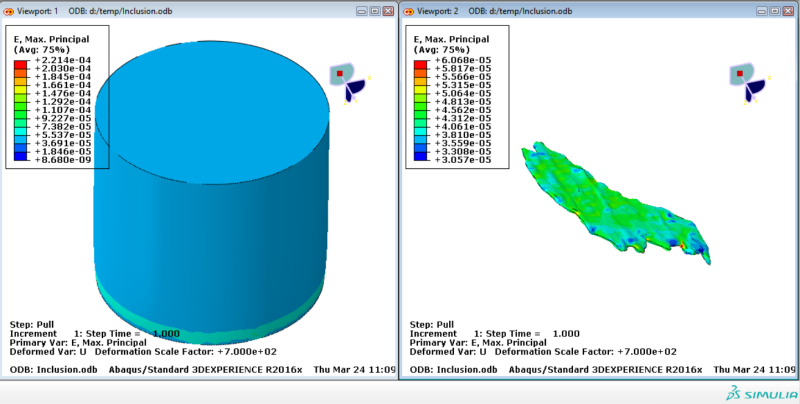Dear all,
I have two different volumes, an inclusion and a cylindrical volume, which consist of two different materials. The inclusion should be insert in the cylindrical volume, that means the two parts should act as a single volume upon loading to analyse the stress concentration.
My idea was to define different materials / section assignments in the part modul and then use merge with retained boundaries to create one instance, so I can mesh the two volumes as one without using tie constraints.
However, preparing a data check, I get lots of warnings concerning tie constraints although I didn't define any constraints (see attachment with warnings; the 8783 nodes in the first line are the nodes along the retained boundaries).
The results were plausibel, but does this mean that I have to define tie constraints?! If so, what's the best way to create tie constraints - use cut in the assembly modul to create a "hole" with the shape of the inclusion in the cylinder and then insert the inclusion per merge?
I have two different volumes, an inclusion and a cylindrical volume, which consist of two different materials. The inclusion should be insert in the cylindrical volume, that means the two parts should act as a single volume upon loading to analyse the stress concentration.
My idea was to define different materials / section assignments in the part modul and then use merge with retained boundaries to create one instance, so I can mesh the two volumes as one without using tie constraints.
However, preparing a data check, I get lots of warnings concerning tie constraints although I didn't define any constraints (see attachment with warnings; the 8783 nodes in the first line are the nodes along the retained boundaries).
The results were plausibel, but does this mean that I have to define tie constraints?! If so, what's the best way to create tie constraints - use cut in the assembly modul to create a "hole" with the shape of the inclusion in the cylinder and then insert the inclusion per merge?

